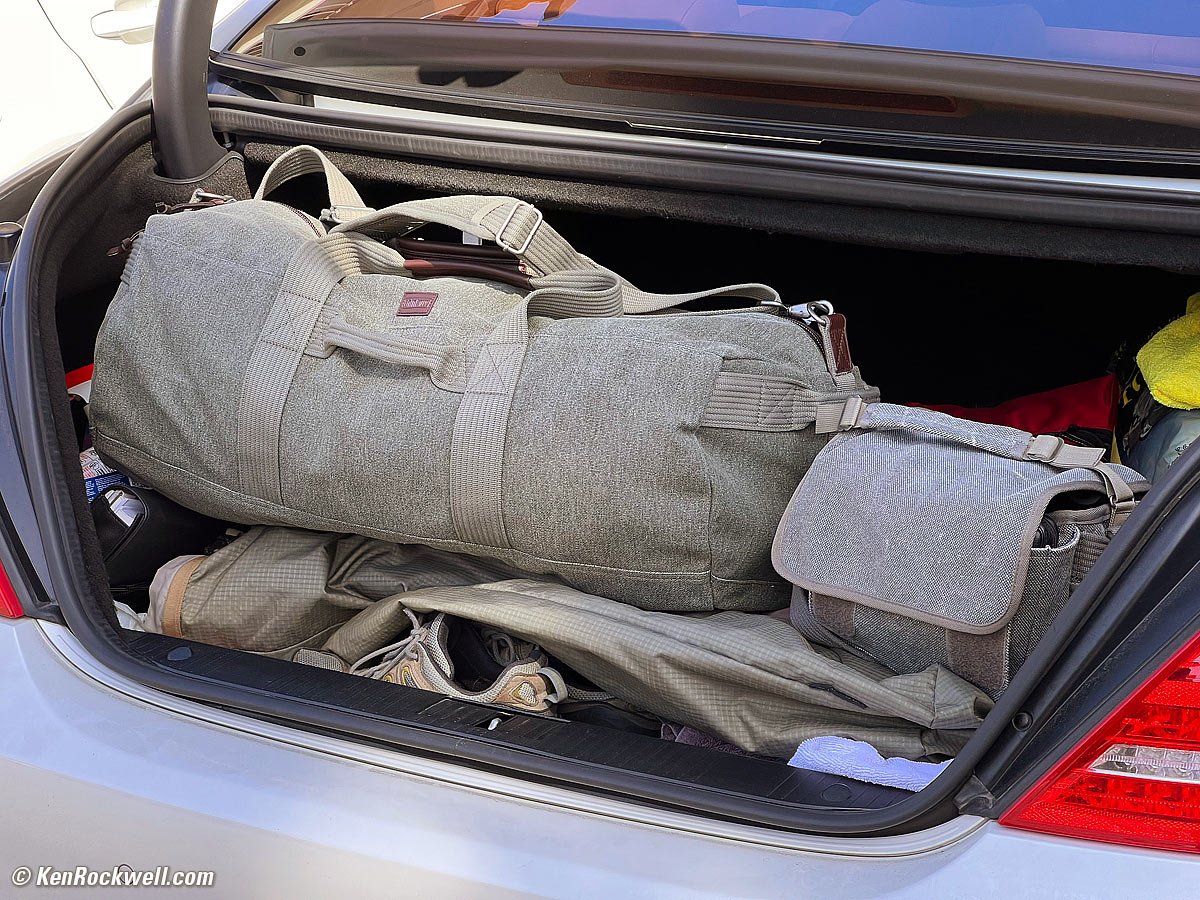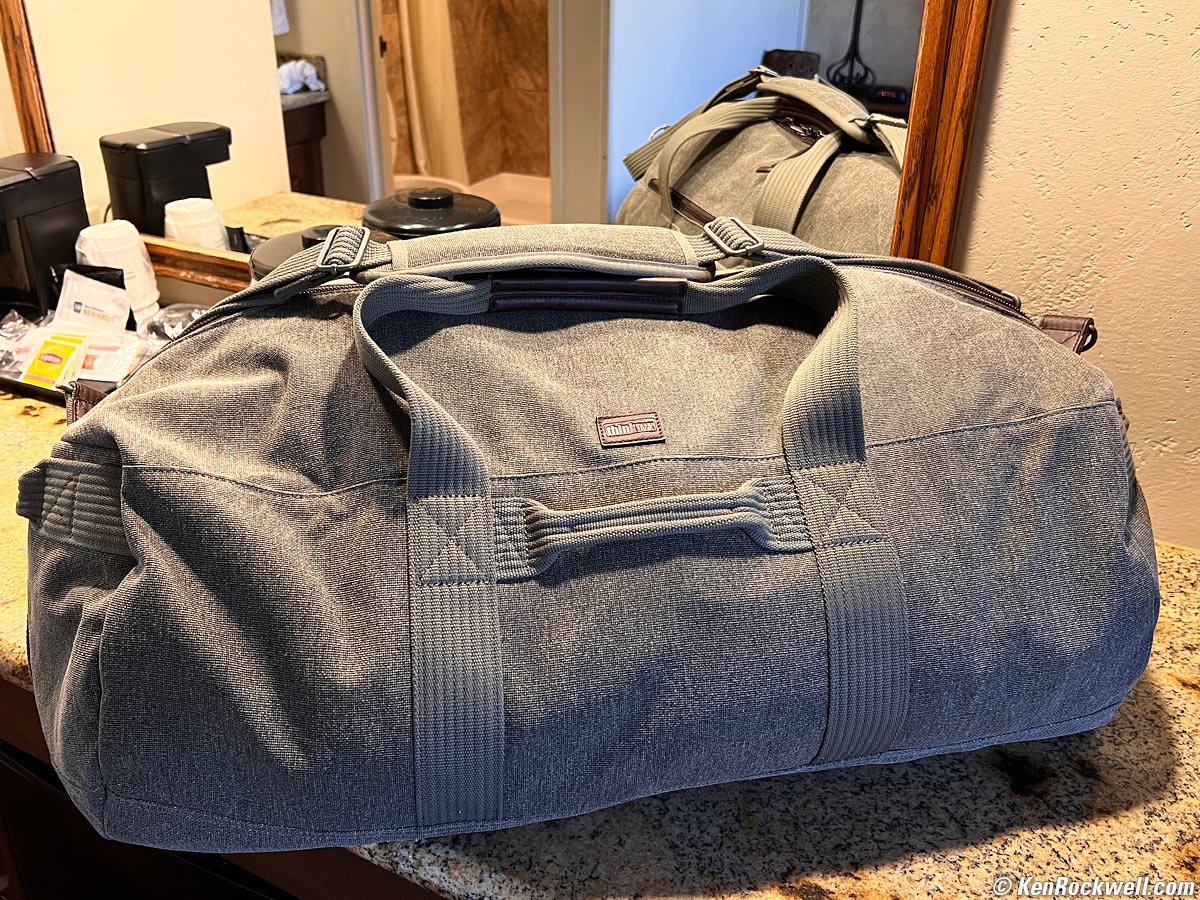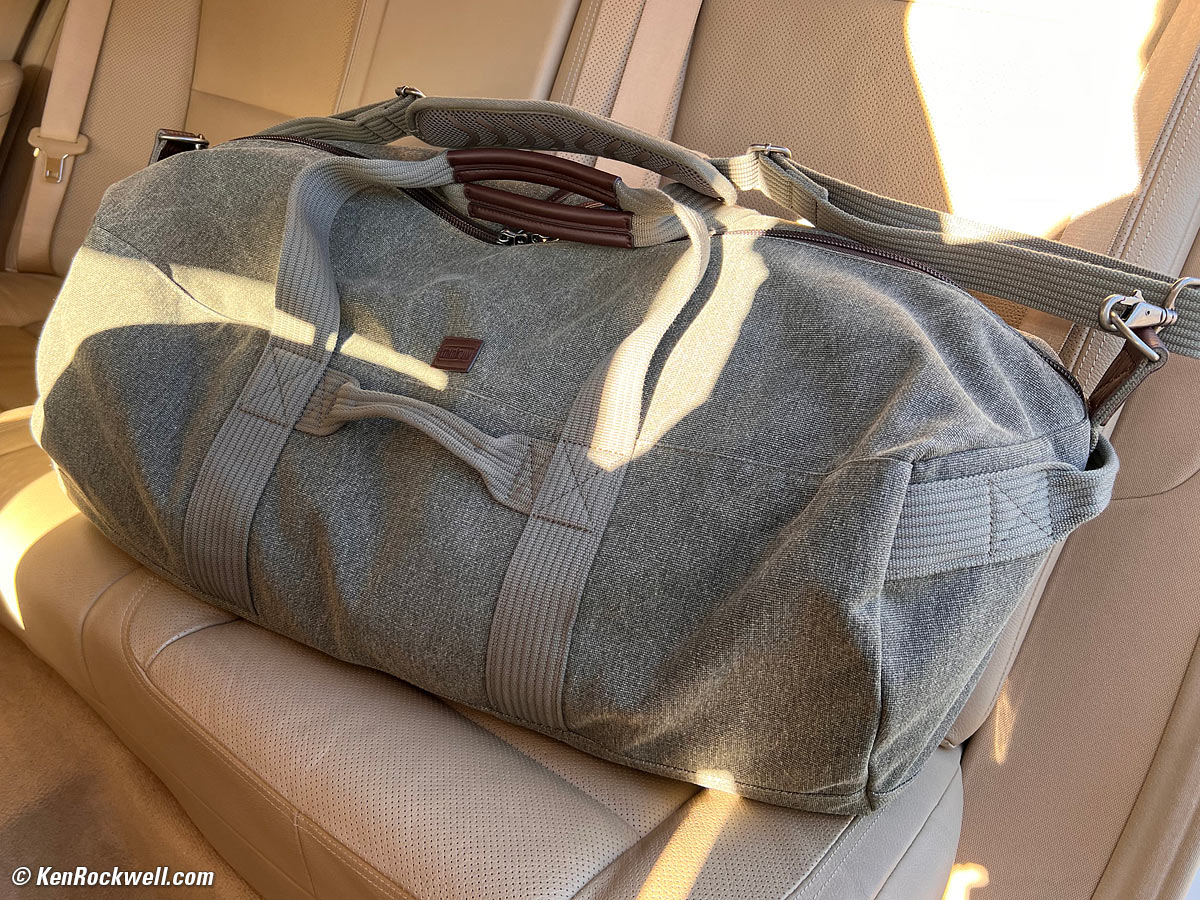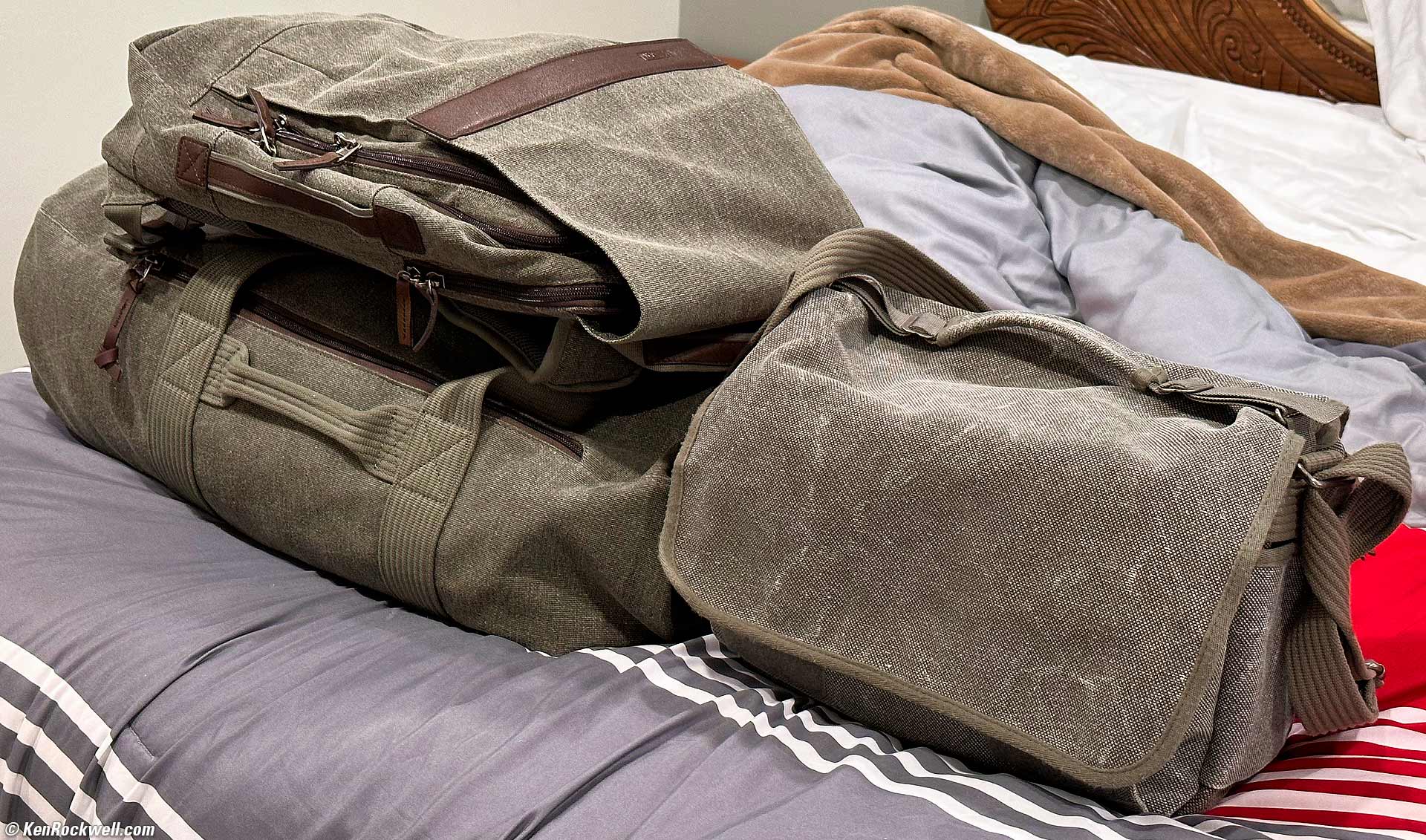How I Made These Photos: Fall Color from California's Eastern Sierra
October 2023
Introduction
I made these photos on a trip I helped lead with Dave Wyman to California's Eastern Sierra.
Shooting
I brought just my Canon EOS R6 II with my RF 14-35mm f/4 L IS USM and RF 24-240mm IS USM lenses. All I needed was the one battery that came with the camera to have enough power for each very full day.
My RF 24-240mm IS USM does almost all of the work, covering almost every focal length with a twist of the wrist, and I had my RF 14-35mm f/4 L IS USM for the occasional ultrawide shot.
Most consumers don't realize that the RF 24-240mm IS USM is just as sharp as the much larger RF 24-70mm f/2.8 L IS USM and RF 70-200/2.8 L IS USM lenses because it's much slower (f/4~6.3). This lets the RF 24-240mm IS USM be far less expensive, smaller and cover a much larger zoom range with the same great sharpness as you can see. Making a lens a stop or two faster has always involved much more size, weight, expense and restricted zoom range.
My RF 24-240mm IS USM's fantastic image stabilization gives me consistently superb results hand-held down to about 1/8 of a second at every focal length. I set Auto ISO Minimum Shutter Speed to 1/8 or 1/10, hold my breath and squeeze the shutter button slowly and smoothly, and I almost always get ultrasharp results at low ISOs, no tripod needed. Try it! Hint: if you're on the edge of being sharp or not due to camera motion, let off a few shots and pick the one that's sharpest later. Camera motion is random, so in iffy situations you'll usually get one perfectly sharp frame if you shoot several.
I also brought my EF 100-400mm L II IS USM on my EF to RF Ring adapter for a few long shots. My EF TC 1.4× II and EF TC 2× II extenders also worked great stacked for my eclipse shots; something no RF extenders can do.
I brought my original 1995 Gitzo M1228 Mountaineer Carbon-Fibre Tripod with my Manfrotto 410 (née Bogen 3275) Geared Head for only some shots. I use a Nikon AH-5 tripod adapter on top of the geared head so I can attach cameras with just the thumb screw of the AH-5; I've never understood how seven steps to get a camera on a quick release is quick.
I usually shoot in P (program auto exposure), Auto ISO and Auto White Balance. I only come off of these Auto modes if for some reason the camera isn't setting itself the way I need. I use all these Auto settings because they almost always set the camera the way I need much faster than mucking around with manual settings, and this lets me concentrate on what's actually in my photo rather than camera settings.
I shot my R6 II in STANDARD Picture Style with Sharpening set to +7,1,1 and Saturation set to +4. I was running firmware version 1.1.4.
I only shoot JPGs, specifically NORMAL (▟ stairstep icon) JPGs; no FINE (quarter circle) JPGs or RAW CR3 files were used or needed. JPGs give me full freedom to adjust exposure and dynamic range exactly like raw; don't let bullies make you think you need to use card-choking raw files just to edit your photos! I'm only throwing away pixel bloat and saving file and card space; my 24 MP JPG images have more than enough depth and detail for everything I need, and due to pixel dumping you can't even see more than 8 MP at one time anyway!
Of course I brought my Apple iPhone 15 Pro Max. I use its native all-automatic Camera app in its default HEIF format (Settings > Camera > Formats > CAMERA CAPTURE > High Efficiency) mode.
I have the "look" of my iPhone set to WARM (Settings > Camera > PHOTO CAPTURE > Photographic Styles > Warm (Tone 0 and Warmth 50).
The iPhone doesn't simply have three or four "lenses," it actually has three complete cameras on its back, which is why I refer to its various cameras rather than a lens. Each camera has a different-sized sensor optimized to its lens.
I read the EXIF exposure data for all my shots later in Photo Mechanic so I can report them under each image; I certainly didn't fiddle with manual exposures. It's also easy to read the iPhone's apertures, ISOs and shutter speeds in the Photos app by tapping the ⓘ (photo info) icon.
I traveled with my Canon system in my Retrospective 7 camera bag, while at any location I'd grab just the camera and pop the second lens (and maybe my grad and polarizing filters) in my pocket, leaving the bag with all my other accessories and tripod back in the car. My iPhone 15 Pro Max always rides in my jeans pocket.
I brought my clothes and non-photo gear in my ThinkTank Retrospective Duffel 75, a good-sized duffel bag that matches my beloved Retrospective camera bags! It holds just the right amount of clothes, toiletries, computers and accessories for a week-long trip. It's super well-made of waterproof cotton canvas, cloth linings and leather trim just like the Retrospective camera bags; it's not the usual crummy nylon duffel bag. Perfect!
 |
 |
 |
ThinkTank Retrospective Duffel 75. The left photo shows my Retrospective 5 bag, too. click any to enlarge.
I brought my computers and chargers in my Think Tank Retrospective Everyday EDC Backpack, so all three bags matched!
The Ultimate Travel Set: Think Tank Retrospective Everyday EDC Backpack on top of my Retrospective Duffel 75 next to my Retrospective 7 Camera Bag. bigger.
Data Wrangling top
When I got home I copied the JPGs from my SD card into my Mac with the card reader slot in the front of my OWC Thunderbolt 3 Dock. Easy!
Because my 2012 copy of Photoshop CS6 doesn't read the modern HEIF images shot on iPhone, I converted the iPhone HEIFs to JPGs as I imported them by selecting the appropriate images, tapping the SHARE icon, then OPTIONS > FORMAT > Most Compatible, which converts them to JPG, and AirDropping them to my hotrod touchbar 4-port 2018 13" MacBook Pro with a quad-core 2.7 GHz i7 with 16 GB RAM and a 1 TB SSD running Mojave 10.14.6. I don't worry about losing the HEIC files because they're still stored in my iPhone if I need them.
Selecting the Best Shots top
I sorted and picked the winners with Photo Mechanic. This is the fun part.
I code red (pressed 1) for deletion, yellow (pressed 2) as picks, and green (pressed 3) as super picks.
Editing top
Once selected, each pick received significant artistic input in Photoshop CS6 (2012), usually with the Skylum Luminar Neo and/or the Perfectly Clear (now sold as Radiant Photo) plugins until each completed work looked as I originally envisioned it. I'm not a fan of presets; I use this software as tools to get to the image I first saw in my mind faster, but skip the presets each offers.
I can't give you the exact steps I used for any particular image; it's performance art for me. I just get into Photoshop and keep working with whatever it takes until the image looks as I first imagined it. Every step brings me closer and closer to my previsualized result; I use no presets.
Like all of Man's creations, each works first exists in my mind, and I do whatever it takes until the final result matches my vision. For instance, I often add deliberate burning and dodging (localized lightening and darkening), cropping, edge-burning (edge darkening or vignetting), strong levels and saturation changes, perspective corrections and/or split-toning. Photography is a creative art, not an application of rules; you have to know what the picture is going to say and how you want it to look before you take it. See also my articles at How to Take Great Pictures.
Some of the iPhone shots were also optimized in the free Snapseed app on my iPhone while I was still at the location just to pester my friends who didn't come with the just-shot images. Snapseed is a blast.
Once optimized in Photoshop CS6 and my plug-ins, I used a a one-click action I programmed decades ago to resize each image to 1,920 pixels wide, sharpened it to correct for resampling aperture correction and added my ©KenRockwell.com bug and Saved For Web at 51% quality to preserve full chroma bandwidth. Please excuse the lingo; I've worked in digital image processing since the 1980s and haven't taken the time yet to explain the engineering lingo for things like "kernels" and resampling apertures.
I built and published these pages in my 2010 copy of Dreamweaver CS5. There is no template; this page is designed by hand. I tried the 2019 CC version of Dreamweaver and it was AWFUL, continuously crashing and often unable to complete basic copy-and-pastes, so I stick with CS5 and my old Mojave operating system, which work great so I can focus on making pictures rather than chasing new bugs and learning new versions of the same old software.
Viewing top
Turn up your screen brightness for best results.
Click or tap any image to make it fit your screen. On Mac Safari, command ⌘ and + or - on will change the size of the page or image, and command ⌘ + 0 brings it back to normal.
Everyone's screens, from iPhones held vertically to computers with squinty 16:9 monitors, have different shapes. I can't make my differently-shaped shots fill everyone's screen at the same time.
These are 1,920 pixel-wide images; the originals are much higher resolution, but only a few of those original files are shared. These images will fill your screen horizontally, up to 1,920 pixels wide (or 3,840 pixels wide on Mac Retina displays). The vertical size will vary with each image.
On iPhone and iPad, everything changes size when you rotate between vertical and horizontal.
Good luck and enjoy!
< < Back to Photos
© Ken Rockwell. All rights reserved. Tous droits réservés. Alle Rechte vorbehalten. Alla rättigheter förbehållna. Toate drepturile rezervate. Ken Rockwell® is a registered trademark.
